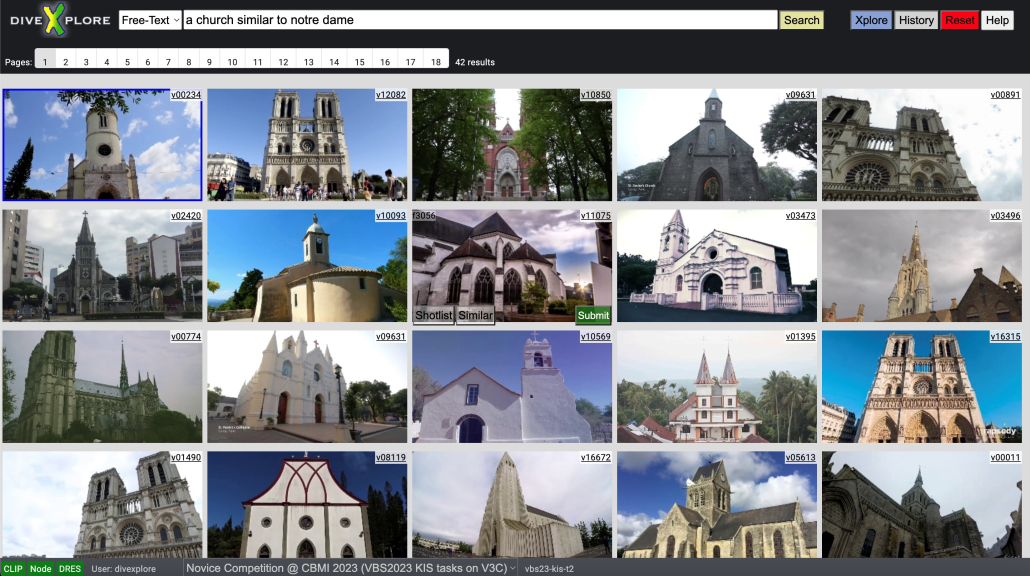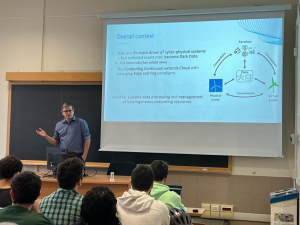
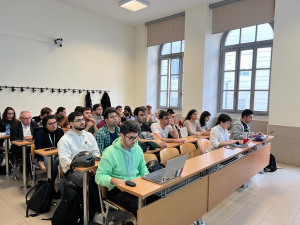

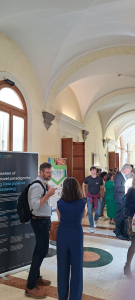




The Symposium “The Data Science and Artificial Intelligence (DSAI) carnival” took place on the 19th of October 2023 at the Wageningen University & Research Campus and was organized in collaboration with the Wageningen Data Competence Center (WDCC).
This symposium provided an in-depth examination of cutting-edge themes from areas such as the Web, Semantic Web, linked data and knowledge graphs, LLMs, MLOps, cloud computing, data infrastructures and data space, FAIR data management, and related developments.
Leading experts shared the latest research and applications in these areas, fostering collaboration and offering insights into emerging trends.
The event concluded with the inaugural lecture of Prof. Dr. Anna Fensel.
IEEE Access, A Multidisciplinary, Open-access Journal of the IEEE
Title: Characterization of the Quality of Experience and Immersion of Point Cloud Video Sequences through a Subjective Study @ IEEE Access
Authors: Minh Nguyen, Shivi Vats, Sam Van Damme (Ghent University – imec and KU Leuven, Belgium), Jeroen van der Hooft (Ghent University – imec, Belgium), Maria Torres Vega (Ghent University – imec and KU Leuven, Belgium), Tim Wauters (Ghent University – imec, Belgium), Filip De Turck (Ghent University – imec, Belgium), Christian Timmerer, Hermann Hellwagner
Abstract: Point cloud streaming has recently attracted research attention as it has the potential to provide six degrees of freedom movement, which is essential for truly immersive media. The transmission of point clouds requires high-bandwidth connections, and adaptive streaming is a promising solution to cope with fluctuating bandwidth conditions. Thus, understanding the impact of different factors in adaptive streaming on the Quality of Experience (QoE) becomes fundamental. Point clouds have been evaluated in Virtual Reality (VR), where viewers are completely immersed in a virtual environment. Augmented Reality (AR) is a novel technology and has recently become popular, yet quality evaluations of point clouds in AR environments are still limited to static images.
In this paper, we perform a subjective study of four impact factors on the QoE of point cloud video sequences in AR conditions, including encoding parameters (quantization parameters, QPs), quality switches, viewing distance, and content characteristics. The experimental results show that these factors significantly impact the QoE. The QoE decreases if the sequence is encoded at high QPs and/or switches to lower quality and/or is viewed at a shorter distance, and vice versa. Additionally, the results indicate that the end user is not able to distinguish the quality differences between two quality levels at a specific (high) viewing distance. An intermediate-quality point cloud encoded at geometry QP (G-QP) 24 and texture QP (T-QP) 32 and viewed at 2.5 m can have a QoE (i.e., score 6.5 out of 10) comparable to a high-quality point cloud encoded at 16 and 22 for G-QP and T-QP, respectively, and viewed at a distance of 5 m. Regarding content characteristics, objects with lower contrast can yield better quality scores. Participants’ responses reveal that the visual quality of point clouds has not yet reached an immersion level as desired. The average QoE of the highest visual quality is less than 8 out of 10. There is also a good correlation between objective metrics (e.g., color Peak Signal-to-Noise Ratio (PSNR) and geometry PSNR) and the QoE score. Especially the Pearson correlation coefficients of color PSNR is 0.84. Finally, we found that machine learning models are able to accurately predict the QoE of point clouds in AR environments.
The subjective test results and questionnaire responses are available on Github: https://github.com/minhkstn/QoE-and-Immersion-of-Dynamic-Point-Cloud.
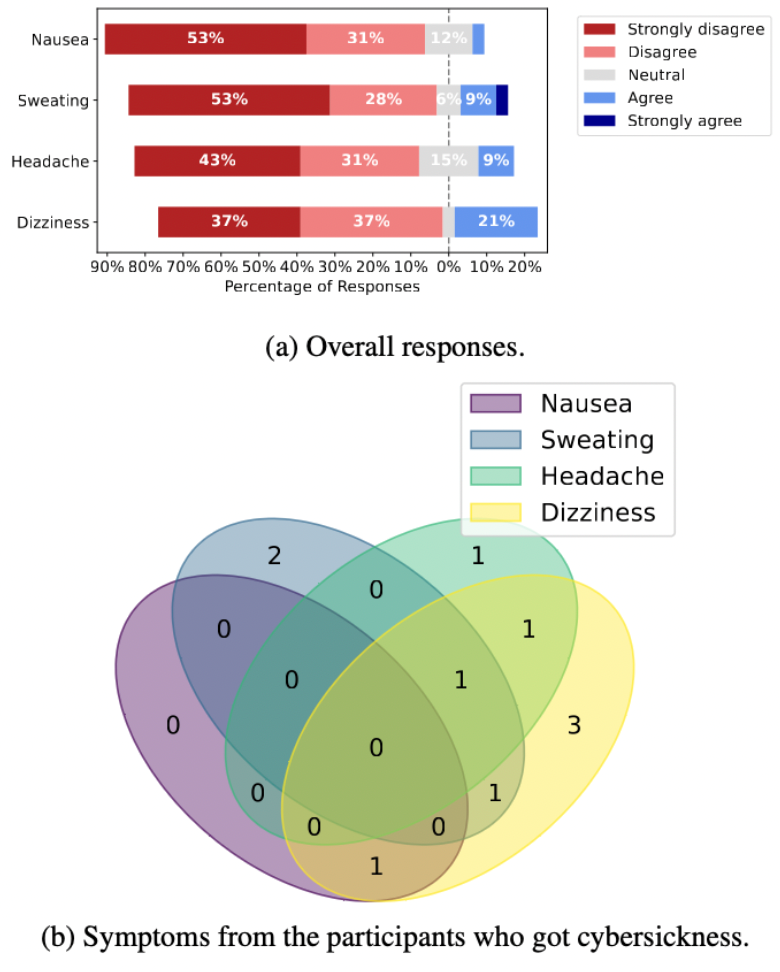

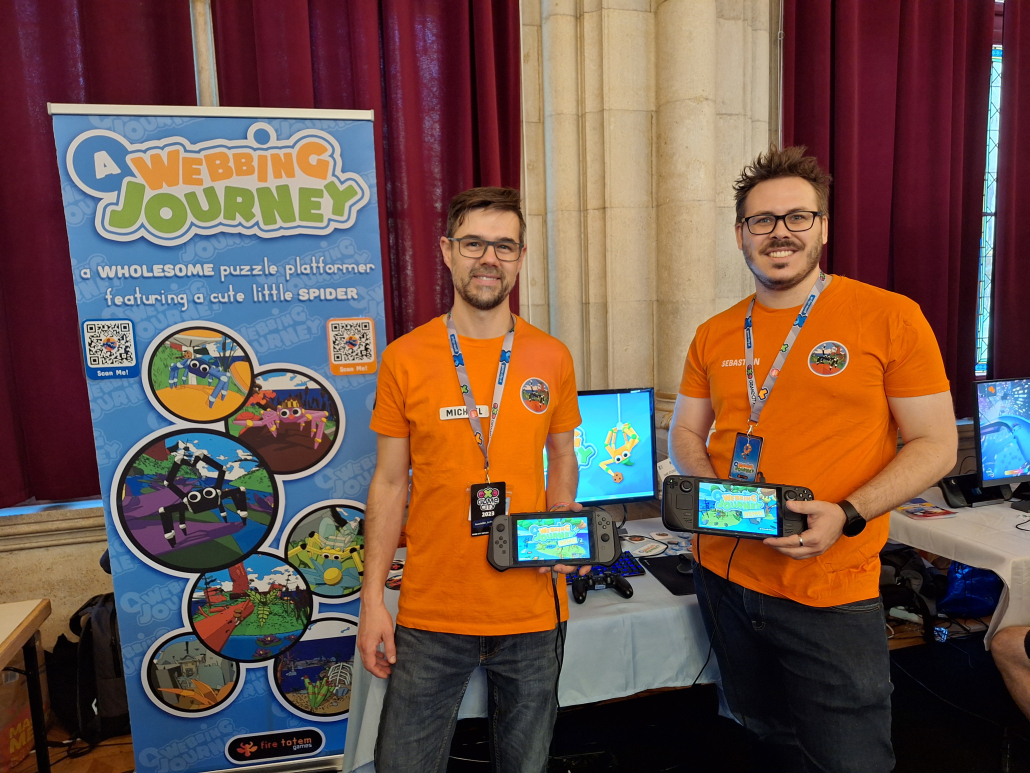
The 19th International Conference on emerging Networking EXperiments and Technologies (CoNEXT) Paris, France, December 5-8, 2023
Authors: Leonardo Peroni (IMDEA Networks Institute), Sergey Gorinsky (IMDEA Networks Institute), Farzad Tashtarian (Alpen-Adria-Universität Klagenfurt, Austria), and Christian Timmerer (Alpen-Adria-Universität Klagenfurt, Austria).
Abstract: Quality of Experience (QoE) and QoE models are of an increasing importance to networked systems. The traditional QoE modeling for video streaming applications builds a one-size-fits-all QoE model that underserves atypical viewers who perceive QoE differently. To address the problem of atypical viewers, this paper proposes iQoE (individualized QoE), a method that employs explicit, expressible, and actionable feedback from a viewer to construct a personalized QoE model for this viewer. The iterative iQoE design exercises active learning and combines a novel sampler with a modeler. The chief emphasis of our paper is on making iQoE sample-efficient and accurate.
By leveraging the Microworkers crowdsourcing platform, we conduct studies with 120 subjects who provide 14,400 individual scores. According to the subjective studies, a session of about 22 minutes empowers a viewer to construct a personalized QoE model that, compared to the best of the 10 baseline models, delivers the average accuracy improvement of at least 42% for all viewers and at least 85\% for the atypical viewers. The large-scale simulations based on a new technique of synthetic profiling expand the evaluation scope by exploring iQoE design choices, parameter sensitivity, and generalizability.
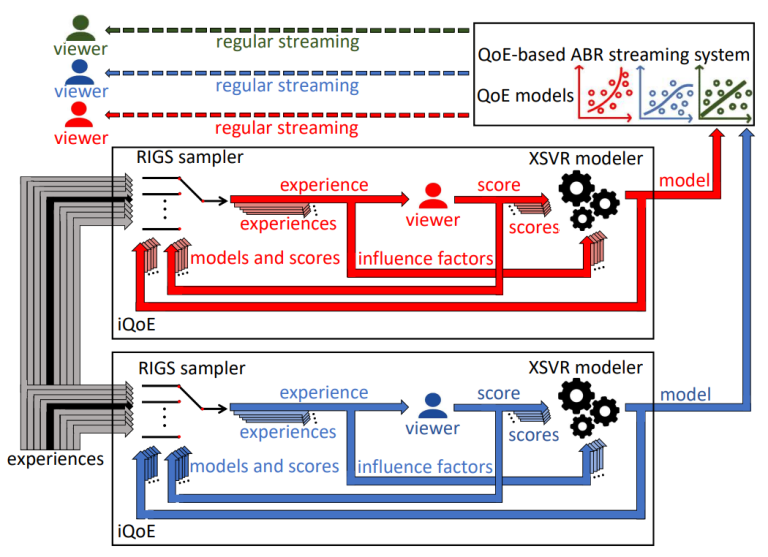
Delighted to host last #PlenaryMeeting of #Datacloud 2020 project. Final adjustments for tool integration and business cases deployments ahead.
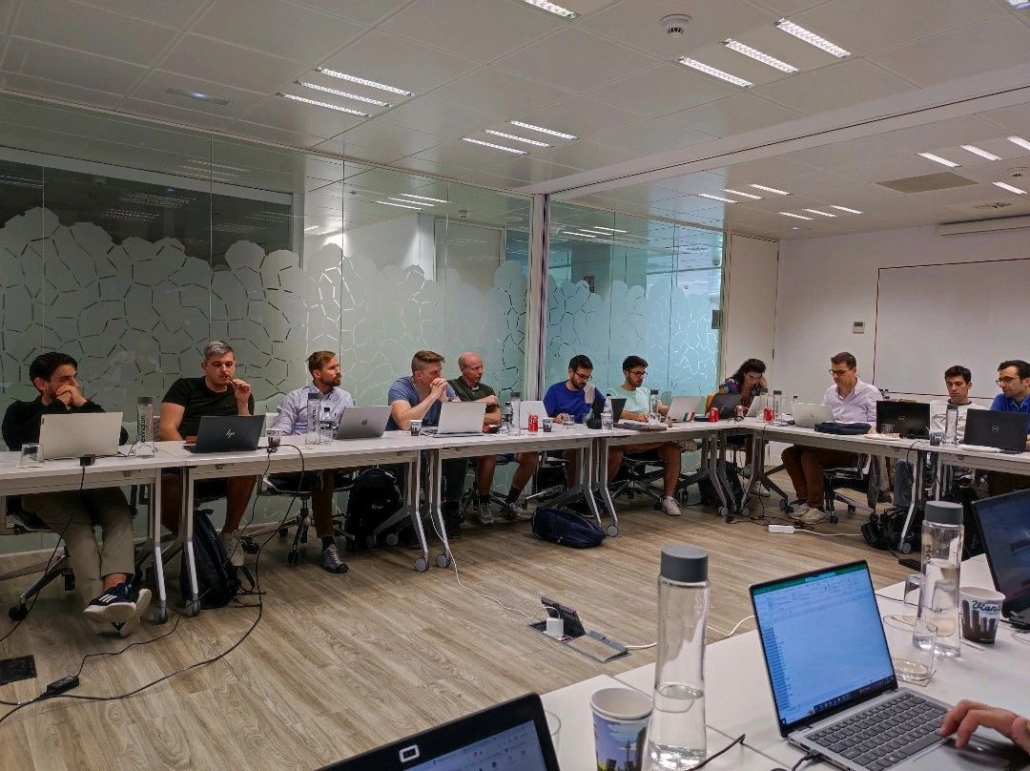
Authors: Gregor Molan, Gregor Dolinar, Jovan Bojkovski, Radu Prodan, Andrea Borghesi, Martin Molan
Journal: IEEE Access
Purpose: The gap between software development requirements and the available resources of software developers continues to widen. This requires changes in the development and organization of software development.
Objectives: Presented is a model introducing a quantitative software development management methodology that estimates the relative importance and risk of functionality retention or abundance, which determines the final value of the software product.
Method: The final value of the software product is interpreted as a function of the requirements and functionalities, represented as a computational graph (called a software product graph). The software product graph allows the relative importance of functionalities to be estimated by calculating the corresponding partial derivatives of the value function. The risk of not implementing the functionality is estimated by reducing the final value of a product.
Validation: This model has been applied to two EU projects: CareHD and vINCI. In vINCI, the functionalities with the most significant added value to the application were developed based on the implemented model and those that brought the least value were abandoned. Optimization was not implemented in the CareHD project and proceeded as initially designed. Consequently, only 71% of the CareHD’s potential value has been realized.
Conclusions: Presented model enables rational management and organization of software product development with real-time quantitative evaluation of functionalities impacts, assessment of the risks of omitting them without a significant impact. A quantitative evaluation of the impacts and risks of retention or abundance is possible based on the proposed algorithm, which is the core of the model. This model is a tool for rational organization and development of software products.
Special Issue on Sustainable Multimedia Communications and Services, IEEE COMSOC MMTC Communications – Frontiers
Title: Towards Low-Latency and Energy-Efficient Hybrid P2P-CDN Live Video Streaming
Authors: Reza Farahani, Christian Timmerer, and Hermann Hellwagner
Abstract: Streaming segmented videos over the Hypertext Transfer Protocol (HTTP) is an increasingly popular approach in both live and video-on-demand (VoD) applications. However, designing a scalable and adaptable framework that reduces servers’ energy consumption and supports low latency and high quality services, particularly for live video streaming scenarios, is still challenging for Over-The-Top (OTT) service providers. To address such challenges, this paper introduces a new hybrid P2P-CDN framework that leverages new networking and computing paradigms, i.e., Network Function Virtualization (NFV) and edge computing for live video streaming. The proposed framework introduces a multi-layer architecture and a tree of possible actions therein (an action tree), taking into account all available resources from peers, edge, and CDN servers to efficiently distribute video fetching and transcoding tasks across a hybrid P2P-CDN network, consequently enhancing the users’ latency and video quality. We also discuss our testbed designed to validate the framework and compare it with baseline methods. The experimental results indicate that the proposed framework improves user Quality of Experience (QoE), reduces client serving latency, and improves edge server energy consumption compared to baseline approaches.
International Conference on Visual Communications and Image Processing (IEEE VCIP’23)
Authors: Vignesh V Menon, Reza Farahani, Prajit T Rajendran, Samira Afzal, Klaus Schoeffmann, Christian Timmerer
Abstract: With the emergence of multiple modern video codecs, streaming service providers are forced to encode, store, and transmit bitrate ladders of multiple codecs separately, consequently suffering from additional energy costs for encoding, storage, and transmission. To tackle this issue, we introduce an online energy-efficient Multi-Codec Bitrate ladder Estimation scheme (MCBE) for adaptive video streaming applications. In MCBE, quality representations within the bitrate ladder of new-generation codecs (e.g., HEVC, AV1) that lie below the predicted rate-distortion curve of the AVC codec are removed. Moreover, perceptual redundancy between representations of the bitrate ladders of the considered codecs is also minimized based on a Just Noticeable Difference (JND) threshold. Therefore, random forest-based models predict the VMAF of bitrate ladder representations of each codec. In a live streaming session where all clients support the decoding of AVC, HEVC, and AV1, MCBE achieves impressive results, reducing cumulative encoding energy by 56.45%, storage energy usage by 94.99%, and transmission energy usage by 77.61% (considering a JND of six VMAF points). These energy reductions are in comparison to a baseline bitrate ladder encoding based on current industry practice.
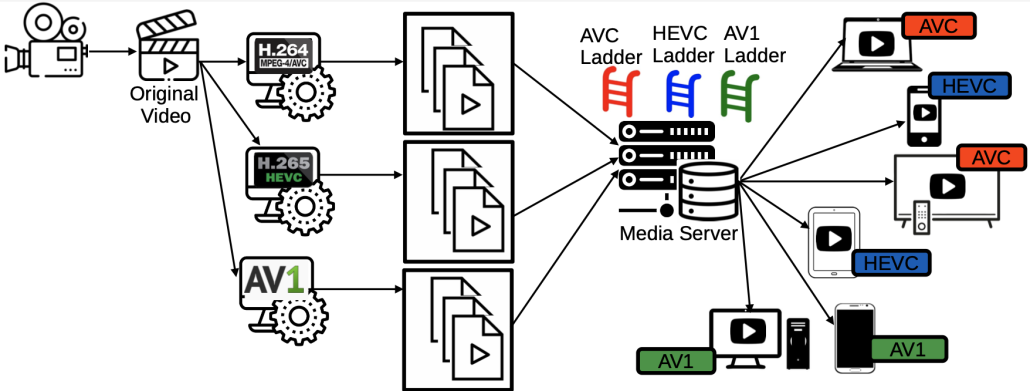
The Interactive Video Retrieval for Beginners (IVR4B) special session and competition took place on September 21, 2023, at the International Conference on Multimedia Indexing (CBMI2023) in Orleans, France. https://cbmi2023.org/
We are happy to announce that Klaus Schoeffmann could save the BEST KIS-VISUAL award for this competition, with his interactive video search system diveXplore.

